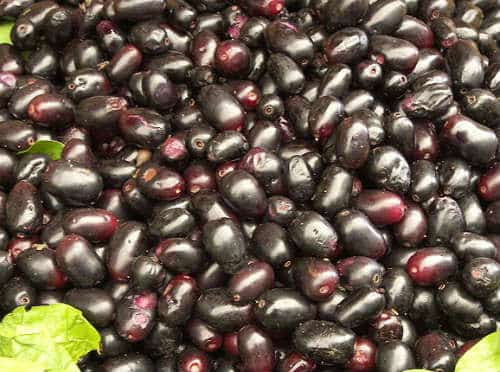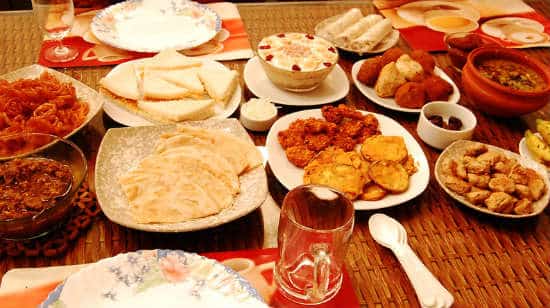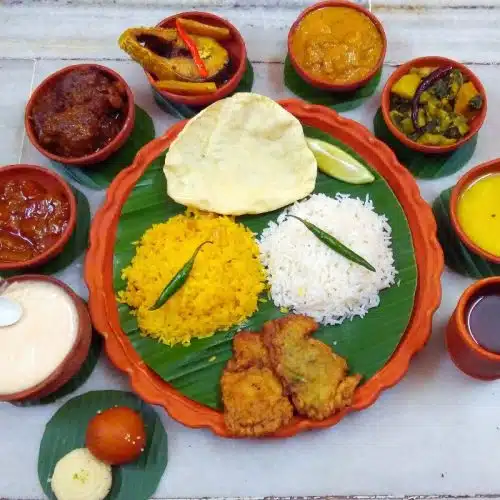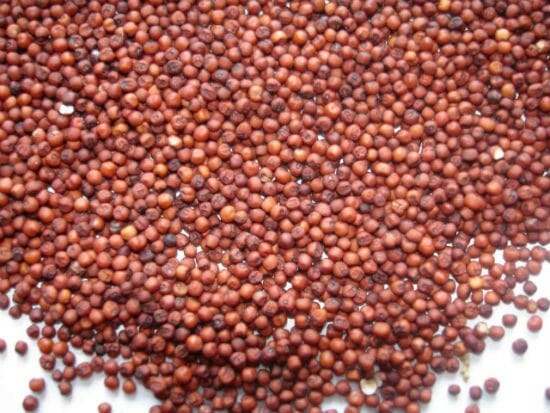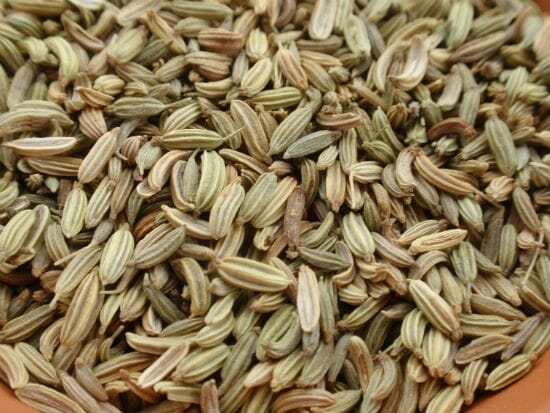Indian cuisine is famous around the world for its rich flavours, diverse ingredients, and vibrant spices. Every region in India has its own special cooking methods. North and South Indian foods are popular examples.
However, many people are familiar with Indian dishes such as biryani or tandoori chicken, but few recognize the stark differences between North and South Indian Cuisine. Let’s explore the unique aspects of these two rich and flavourful food cultures.
Exploring the Base: Wheat vs Rice
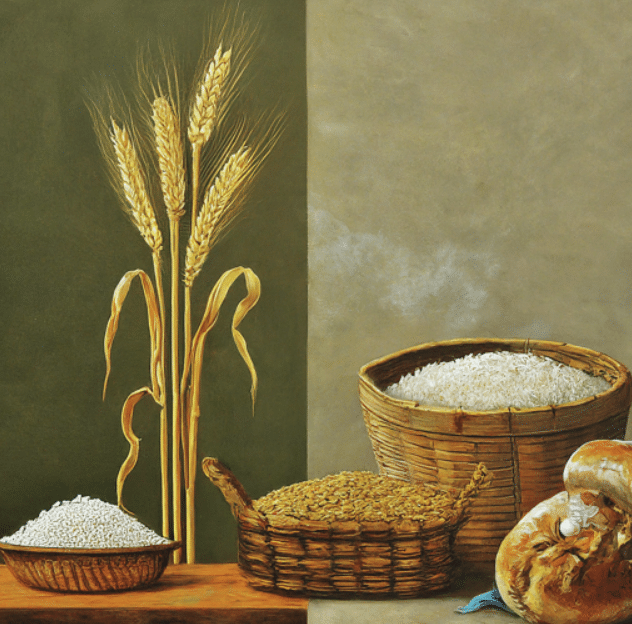
Wheat vs Rice as a core ingredient.
The essence of every cuisine lies in its core ingredients. Wheat is crucial in North Indian dishes like naan, parathas, and rotis, while rice is used for dosas and idlis in South Indian cuisine. This reflects regional geography and cultural traditions, enriching North and South Indian food cultures.
Wheat: The Staple in North Indian Cuisine
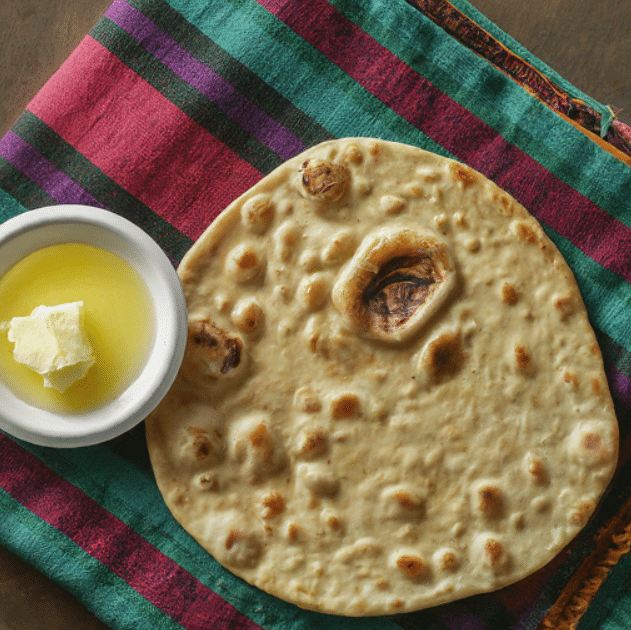
Wheat: The main ingredient in North Indian Cuisine
North Indian cuisine utilises wheat flour in tandoori rotis, naan, parathas, snacks like samosas, and pakoras, and desserts like halwa and sheera, reflecting the region’s agricultural traditions and versatility with this staple crop.
Rice: The Staple in South Indian Dishes
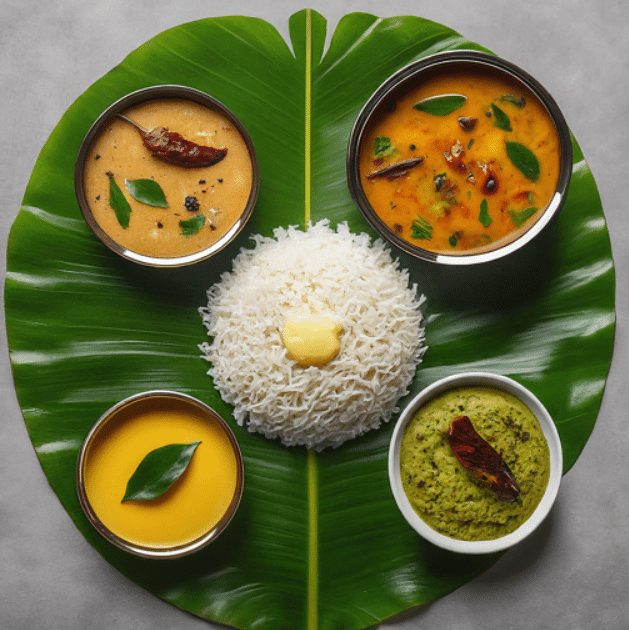
Rice: The main ingredient in South Indian Cuisine
South Indian cuisine highlights rice-based delights such as dosas, idlis, and appams, each crafted with fermented batters and served with sambar or chutney, showcasing culinary finesse with diverse fillings.
Which North Indian or South Indian food has more varieties?
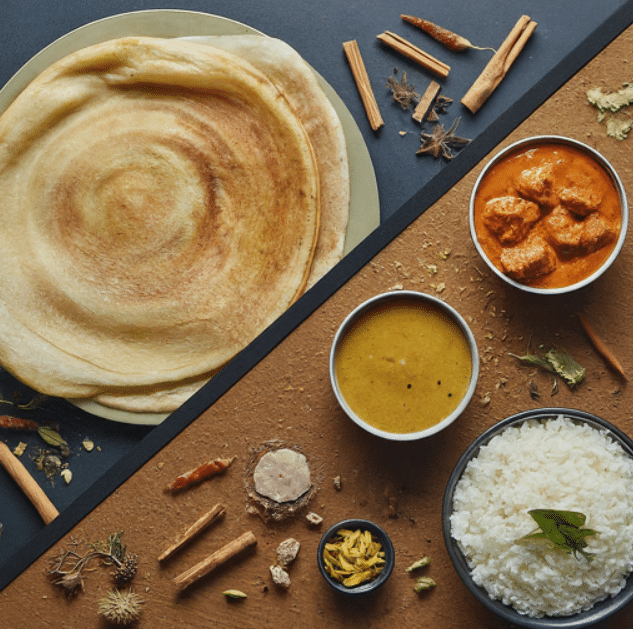
South Indian Tiffen and lunch recipes
North Indian cuisine offers a variety of flavourful dishes for both vegetarians and non-vegetarians. South Indian cuisine features distinct flavours and spices and a wide selection of vegetarian dishes.
The Main Course: A Tale of Two Regions
North Indian cuisine boasts rich gravies like malai kofta and butter chicken, while South Indian dishes offer tangy delights like masala dosa and lemon rice. Both appeal to diverse palates with distinct flavours.
North Indian Main Courses
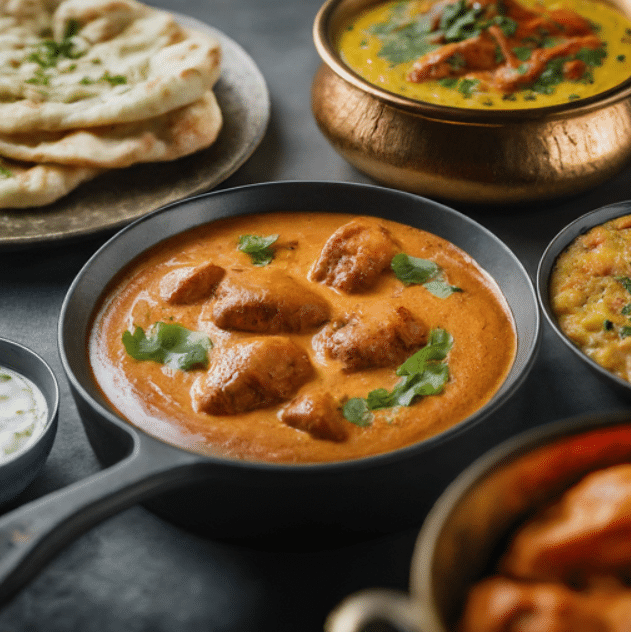
North Indian Main Course Varieties
North Indian main courses are famous for their rich, flavourful gravies. They combine aromatic spices, cream, and ghee for a creamy and indulgent dining experience. Some popular North Indian main course dishes include:
- Malai Kofta: Cottage cheese dumplings in tomato gravy with aromatic spices.
- Butter chicken: Tender chicken in creamy tomato gravy with spices.
- Rogan Josh: Flavourful lamb curry with aromatic spices.
- Shahi Paneer: Paneer in creamy tomato gravy with cashews and spices.
These main course dishes are a testament to the richness and diversity of flavours in North Indian cuisine. Prepare to indulge in the creamy textures and aromatic spices that define these dishes.
South Indian Main Courses
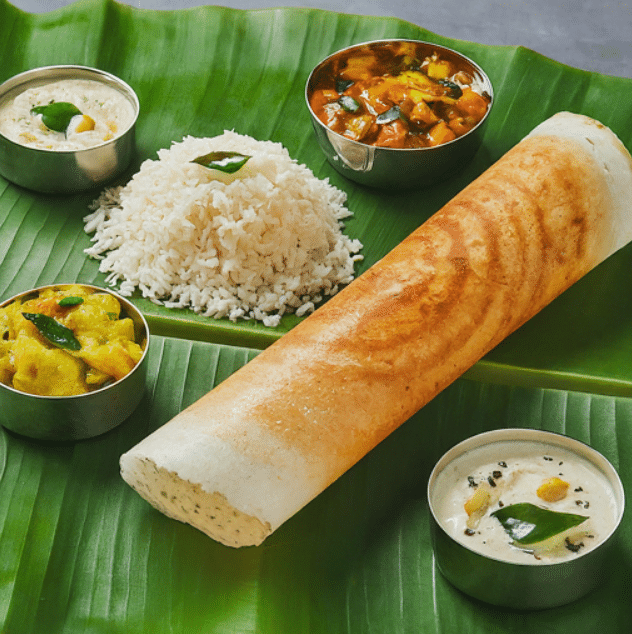
South Indian Main Course Varieties
South Indian main dishes are known for their distinct flavours, with ingredients like tamarind, coconut, and spices for a tangy and refreshing taste. Some popular South Indian main course dishes include:
- Masala Dosa: Crispy crepe with spiced potato filling, served with sambar and chutneys.
- Lemon Rice: Fragrant rice with lemon juice, tempered with mustard seeds and peanuts.
- Avial: Vegetable curry with coconut, yoghurt, and spices, creamy and flavourful.
- Puliogare: Tangy rice dish with tamarind paste and spices.
These main course dishes showcase the vibrant and tangy flavours that South Indian cuisine is known for.
Other popular classic South Indian favourites encompass plain cheese dosas (paper-thin crepes filled with cheese) and idlis (steamed cakes made from fermented rice batter). Meanwhile, North Indian recipes include tandoori chicken, aloo paratha (stuffed potato flatbread), and dal makhani (black lentils).
Regional Influences
From the coastal shores of Mumbai to the rugged mountains of Kashmir, regional influences play a key role in determining the flavours on each region’s plates.
Northern Indian “Mughlai” dishes, influenced by the Mughal Empire, feature-rich spices like saffron and cardamom, cooked with creamy yogurt or cream to create flavourful curries, biryanis, and kababs.
On a contrary note, southern Indian cuisine tends to lean more towards vegetarian options due to its long history of religious dietary restrictions. Here, you’ll find staples like idli (fermented rice cakes) and dosa (rice pancakes), served with chutneys or sambar for added flavour.
Coconut-based South Indian curries and freshly made dosas are tasty alternatives to North Indian dishes. India’s diverse culinary traditions offer unique flavours, attracting visitors annually for delightful dining experiences.
Health on the Plate: Comparing Nutritional Values
Both North and South Indian cuisines offer diverse, flavourful dishes. North Indian cuisine is rich in cream and ghee, while South Indian cuisine features probiotic-rich fermented foods and coconut oil, providing unique health benefits.
The Health Benefits of North Indian Food
North Indian cuisine is known for its rich flavours, which come from ingredients like heavy cream and ghee. Moderation in consumption is crucial due to their high saturated fat content, ensuring responsible enjoyment of North Indian food.
The Health Benefits of South Indian Cuisine
South Indian cuisine is beneficial for health, with fermented foods like dosas and idlis providing probiotics for gut health and coconut oil offering advantages such as improved heart health, weight management, and brain function due to its MCT content.
The Spice Diaries: North vs South
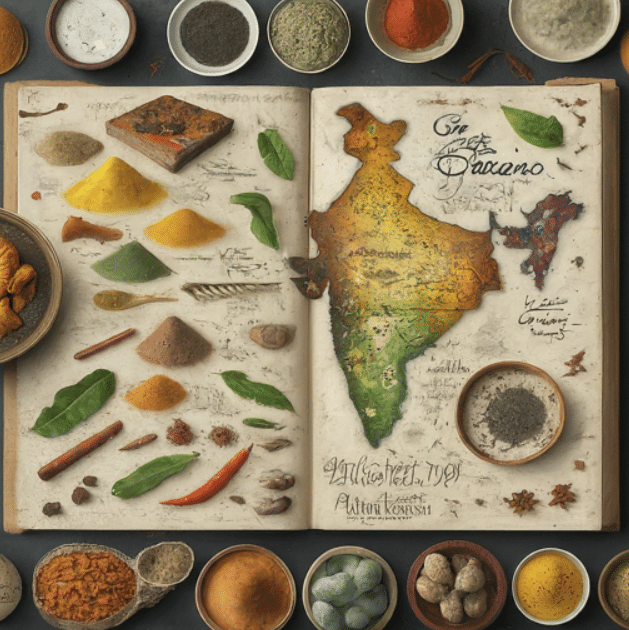
Main Spices of North Indian and South Indian Cooking
Spices play a crucial role in Indian cuisine. North Indian cuisine, with its Mughal heritage, is known for intense spice and herb usage. Surprisingly, Southern Indian dishes feature a profusion of flavourful ingredients like coconut milk, tamarind, and curry leaves, enhancing taste without overpowering it. While North Indian food relies heavily on rich masalas (spice mixtures) for flavour, southern dishes rely more on complex combinations like sweet and sour or spicy and tangy combinations.
North Indian cuisine boils or fries vegetables for curries, while South Indian cuisine prefers flame-roasting for a smoky flavour. Unique herb choices like cilantro in the North and basil in the South enhance regional rice pilafs, offering a diverse range of spices for a unique culinary experience.
From fiery vindaloos in Goa to mild Malabari stews in Kerala, this remarkable diversity ensures everyone can enjoy something delicious wherever their travels take them. Here, let’s take a sneak peek into spice mixes unique to both cuisines:
Spices Mixes Unique to North Indian Recipes
North Indian recipes rely on a variety of spices to create their signature flavours. Some common spices used in North Indian cooking include:
- Garam Masala: Warming blend of cinnamon, cardamom, cloves, and black peppercorns.
- Cumin Seeds: Nutty and earthy flavour staple in North Indian cooking for dishes like dal and curries.
- Dry Red Chillies: Add heat and vibrant red colour to North Indian recipes, used powdered or in tempering for curries.
These spices, along with other aromatic ingredients, contribute to the robust and flavourful taste of North Indian cuisine.
Spice Mixes Unique to South Indian Food
South Indian cuisine is renowned for its unique spice blends and flavours. Some spice mixes that are unique to South Indian food include:
- Sambar Powder: Flavourful mix with roasted lentils and spices for sambar.
- Huli Pudi: Tangy spice blend for rasam soup in South Indian cuisine.
- Curry Leaves: Staple in South Indian cooking, adding aroma to curries and rice dishes.
These spice mixes, along with the aromatic flavours of curry leaves, contribute to the unique and vibrant taste of South Indian cuisine.
Moreover, the Southern dishes tend to be spicier, emphasising tamarinds, chillies and masalas. Also, sambar from Kerala often relies on coconut milk for its creamy texture while using fewer spices to provide subtle yet complex spice profiles. On the other hand, the northern region relies heavily on dairy products like yogurt, cream, ghee (clarified butter), and paneer cheese. On the other hand,
With this understanding of how they differ, we can gain an appreciation for both styles of cooking, which offer something unique for every palate.
Now, let us focus on another significant factor that differentiates these two styles: preparation techniques.
Preparation and Cooking Techniques
The preparation and cooking techniques used in North Indian and South Indian cuisines showcase the diversity of Indian cooking. Some differences include:
North Indian Cuisine: North Indian dishes are known for slow cooking methods like simmering and tandoor cooking in clay ovens. Instant pot usage is also common for quick meals.
South Indian Cuisine: South Indian cooking emphasises steaming, tempering, and fermenting batters for dosas and idlis. Meals are tailored for specific times of the day, featuring diverse offerings like dosas, rice dishes, and curries.
To sum up, North and South India offer diverse culinary traditions, each with unique flavours and presentations.
Top 10 Differences Between North and South Indian Food
There are several distinct differences between North Indian and South Indian food, showcasing the diversity and richness of Indian cuisine. Here are the top 10 differences:
- Staples: North Indian cuisine primarily uses wheat as the staple, while South Indian cuisine relies on rice.
- Bread vs Rice: North Indian cuisine offers a variety of breads like naan and roti, while South Indian cuisine features rice-based dishes like dosas and idlis.
- Spices: North Indian cuisine uses spices like garam masala and cumin seeds, while South Indian cuisine incorporates spices like sambar powder and curry leaves.
- Seafood: South Indian cuisine features a wide variety of seafood dishes, while North Indian cuisine focuses more on meats like chicken and mutton.
- Coconut: Coconut is a prominent ingredient in South Indian cuisine, while it is used in a more limited capacity in North Indian cuisine.
- Snacks: North Indian cuisine offers snacks like samosas and pakoras, while South Indian cuisine features snacks like vadas and idlis.
- Fermented Foods: South Indian cuisine incorporates fermented foods like dosas and idlis, which are not as prevalent in North Indian cuisine.
- Dairy: North Indian cuisine uses dairy products like ghee and cream more extensively, while South Indian cuisine relies more on coconut milk and yoghurt.
- Regional Influences: North Indian cuisine has been influenced by Persian and Mughlai flavours, while South Indian cuisine incorporates regional flavours from states like Tamil Nadu and Kerala.
- Variety: Both cuisines offer a wide variety of dishes, but South Indian cuisine is known for its diverse range of flavours and vegetarian options.
These differences highlight the unique characteristics and culinary traditions of North Indian and South Indian food.
Conclusion
North and South Indian cuisines showcase unique charms in a flavourful battle. Wheat rules the North, while rice dominates the South. Aromatics, regional ingredients, and diverse cooking techniques blend cultures and flavours onto one plate. Thus, both North and South Indian Cuisine exemplify India’s rich culture, proving from time immemorial that no journey through India is complete without experiencing a delightful exploration of its flavourful fare.
Frequently Asked Questions
Which is healthier, North Indian or South Indian food?
Comparing the health benefits of North Indian and South Indian cuisines is challenging. South Indian food supports gut health with fermented dishes, while North Indian cuisine provides protein and vital nutrients. Moderation in consuming ghee and coconut oil is advised.
Which is more tasty, South Indian food or North Indian food?
Comparing the tastes of South and North Indian food is subjective. South Indian cuisine is known for its spiciness and tanginess, while North Indian dishes are rich in flavours and aromas. Both have unique culinary identities that cater to diverse palates.







